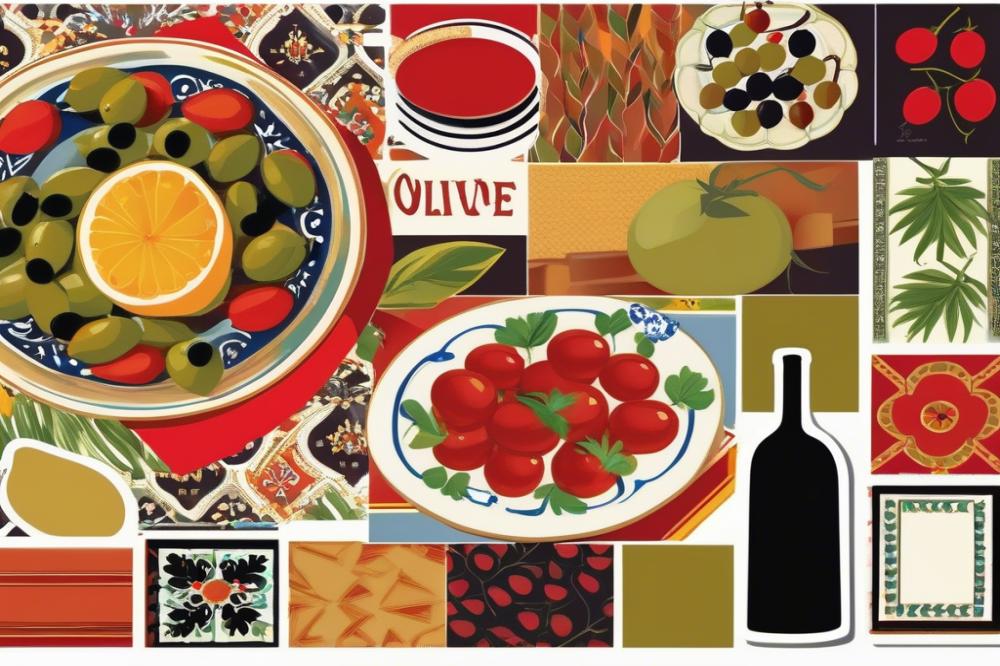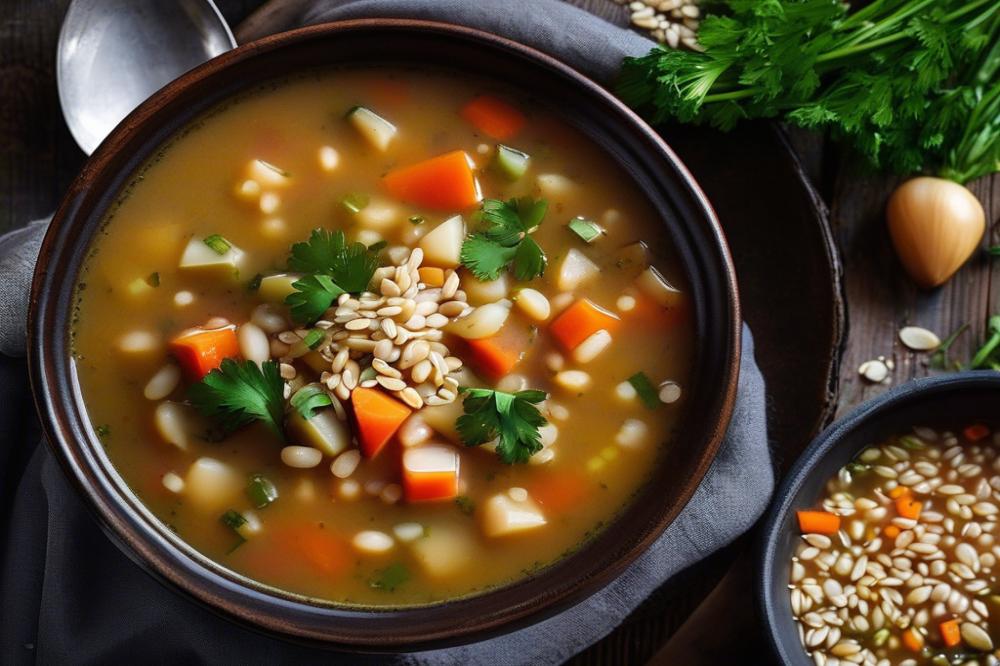Exploring Spain: The Story of Olives and Pan con Tomate
Spain boasts a rich culinary heritage that captivates and delights. This country is known for its vibrant food culture, where flavors dance and stories unfold with each dish. Among its many treasures, Olives and Pan con Tomate stand out as essential components of Spanish cuisine. Both ingredients not only enhance meals but also connect to deep-rooted traditions.
Olives are fundamental to the Mediterranean diet, serving as a key source of healthy fats. The use of olive oil in cooking is prevalent, elevating dishes with its smooth texture and robust taste. Pan con Tomate, a humble yet flavorful dish, showcases the simplicity and freshness of ingredients. A slice of rustic bread topped with ripe tomatoes and drizzled with fine olive oil represents more than just food; it reflects the Spanish spirit of sharing and enjoying life.
This traditional tapa embodies the essence of convivial meals. Tapas culture invites people to gather, taste, and savor various regional specialties. Each bite of Pan con Tomate offers a journey through flavor profiles that resonate with the land’s bounty. The importance of these dishes highlights how food can tell the story of a place, its people, and their culinary traditions.
In conclusion, olives and Pan con Tomate are more than mere ingredients. They are symbols of a broader gastronomic experience that showcases the beauty of Spain’s diverse culinary landscape. Through understanding these dishes, we can better appreciate the rich tapestry of Spanish gastronomy that continues to inspire worldwide.
The Role of Olives in Spanish cuisine

Olives have played a crucial role in the culinary traditions of Spain for centuries. Their historical significance extends back to ancient times when they were cultivated for both oil and table consumption. These small fruits symbolize the Mediterranean diet, contributing a wide array of flavors and textures to various dishes. The cultivation of olives has shaped the agricultural landscape, as well as the food culture, of this vibrant region.
Many varieties of olives are grown across the country, each with its distinctive characteristics. One of the most well-known is the Arbequina olive, a small, sweet variety used mainly for oil. Another popular type is the Manzanilla, known for its slightly nutty flavor that pairs perfectly with tapas. There are also the bold and robust Picual olives, often used to produce high-quality olive oil. These different kinds enhance regional specialties and alter flavor profiles in countless dishes.
Olives significantly impact Spanish gastronomy, influencing not just main courses but also appetizers and snacks. Tapas often feature olives as a key ingredient, either served whole or in dishes like olive tapenade. Combinations of olives, garlic, and anchovies create delicious spreads and snacks that showcase their versatility. Each region’s olives reflect local tastes, elevating dishes to new heights and adding layers of complexity.
Olive oil, extracted from these fruits, is fundamental to Spanish cuisine. It’s not merely a cooking fat but also a flavor element that transforms simple ingredients. Dishes like Pan con Tomate demonstrate the essential use of quality olive oil drizzled over ripe tomatoes on crusty bread. This pairing highlights the richness of olives and their oils while embodying the heart of Spanish cooking. In the Mediterranean diet, olive oil stands as a key component, celebrated for both its health benefits and its ability to elevate dishes to new levels of satisfaction.
Pan con Tomate: A Classic Spanish Dish

Pan con Tomate is a traditional Spanish dish that brings together simple yet vibrant flavors. It features bread topped with ripe tomatoes, garlic, and high-quality extra virgin olive oil. This dish is not just food; it is a part of the cultural identity and culinary traditions of the region. Often enjoyed as a tapa, Pan con Tomate represents the essence of Spanish cuisine and the Mediterranean diet.
The sensation of crunch from the rustic bread contrasts beautifully with the juiciness of fresh tomatoes. Variations exist across different regions, showcasing local ingredients and flavors. In some places, anchovies or herbs may be added, enhancing its diverse flavor profiles. This dish reflects the rich and passionate food culture of the area.
Ingredients List for Preparing Pan con Tomate
- 4 ripe tomatoes
- 4 slices of rustic bread
- 1 clove of garlic
- 4 tablespoons of extra virgin olive oil
- Sea salt to taste
Cooking Instructions for Preparing Pan con Tomate
- Begin by toasting the slices of rustic bread until they become golden brown and crisp.
- While the bread toasts, cut the garlic clove in half. Rub one side of each toasted slice with the garlic.
- Next, slice the ripe tomatoes in half. Squeeze or grate the tomato flesh onto the bread, allowing the juices to soak in.
- Drizzle each piece generously with extra virgin olive oil. Add sea salt to your liking for an extra burst of flavor.
- Serve immediately and enjoy the simplicity of this delightful dish.
Nutritional Information for Each Ingredient
- Ripe tomatoes (4 tomatoes): Approximately 100 calories, rich in vitamins A and C, potassium, and antioxidants.
- Rustic bread (4 slices): About 320 calories, a good source of carbohydrates and fiber depending on the type used.
- Garlic (1 clove): Roughly 5 calories, known for its medicinal properties, including anti-inflammatory effects.
- Extra virgin olive oil (4 tablespoons): Around 480 calories, high in monounsaturated fats, contributing to heart health.
- Sea salt (to taste): Minimal calories, but important for proper body function in small amounts.
Culinary Traditions and Food Culture of Spain

Exploring Regional Variations of Pan con Tomate
Different regions offer their own takes on Pan con Tomate. In Catalonia, the dish is often prepared with a touch of garlic for an added kick. Meanwhile, in Andalusia, the emphasis might shift towards the quality of the tomatoes and olive oil. Variations in bread types can also be observed. Some prefer a rustic, thick loaf, while others opt for lighter, crusty options. Each adaptation showcases the diverse flavor profiles and local ingredients of areas across the country.
Importance of Tapas in Sharing and Socializing
Tapas play an essential role in spanish food culture. They encourage sharing, inviting friends and family to gather around a table. Small plates allow diners to sample a variety of tastes. A plate of Anchoas on the table can spark conversations and create a warm atmosphere. People often enjoy these bites alongside glasses of wine or beer, deepening the social experience. Sharing food creates bonds that last beyond the meal itself.
Role of Olives and Pan con Tomate in Traditional Gatherings
Traditional gatherings often feature Pan con Tomate and olives. These dishes are staples at family celebrations and casual get-togethers alike. Olives, often marinated with herbs and spices, serve as delightful finger foods. A well-made Pan con Tomate complements the olives with its fresh ingredients and rich flavors. Such pairings create a complete experience, emphasizing communal eating and enjoyment.
Culinary Influence of Neighboring Countries on Spanish Recipes
Nearby nations have left their mark on Spanish cuisine. French cooking methods can sometimes be found in the preparation of sauces. Italian techniques are evident in pasta and similar dishes. Even North African spices occasionally find their way into Spanish recipes. These influences contribute to the richness of the Mediterranean diet, melding flavors and techniques that create delightful dishes. The amalgamation of traditions and ingredients makes the gastronomy even more vibrant.
Flavor Profiles and Pairings
The flavors of olives and Pan con Tomate showcase the essence of the Mediterranean diet. Olives present a range of profiles, from bitter and salty to rich and fruity. Different regions in Spain produce various types. Arbequina olives provide a delicate, nutty flavor. In contrast, Manzanilla olives are briny and tangy.
Pan con Tomate consists of rustic bread topped with ripe tomatoes, garlic, and a drizzle of olive oil. The result is a dish that balances sweetness and acidity. Each bite bursts with freshness. The use of high-quality olive oil enhances the dish immensely. This simple dish embodies culinary traditions that have stood the test of time.
Suggested Wine Pairings with Pan con Tomate
Pairing wine with Pan con Tomate can elevate the experience. A Tempranillo offers a smooth, berry-like character that complements the dish. Alternatively, a crisp white wine like Albariño can contrast the richness of the olive oil. The acidity in the white highlights the tomatoes’ freshness. Choose a light rosé for a refreshing option that works well with various tapas.
Complementary Dishes and Tapas to Serve Alongside
Serving Pan con Tomate with other tapas enhances any meal. Chorizo, with its spicy, smoky flavor, works beautifully alongside. Also, consider anchovies, which add saltiness and depth to the meal. A cheese platter featuring Mahón or Manchego creates a delightful combination with the bread and olives. Guests can create their own bite-sized treats.
How These Elements Represent Spain’s Rich Gastronomic Identity
The elements of olive oil, Pan con Tomate, and tapas reflect deep cultural roots. They represent a focus on fresh ingredients and flavor in daily life. These dishes embody regional specialties that vary across the country. The love for food shines through in shared dining experiences. This food culture connects people, invoking a sense of community and tradition. These staples highlight Spain as a land of passion and culinary depth.
Final Thoughts on Culinary Treasures
Olives and Pan con Tomate play vital roles in the heart of Spanish culture. These dishes are not just food items; they symbolize a way of life that celebrates flavors, traditions, and community. The olive tree has historic roots in this vibrant region, representing peace and prosperity. Meanwhile, Pan con Tomate offers a delightful simplicity that captures the essence of how locals take pride in fresh, quality ingredients. You can taste the sun in every bite, with the tomato’s juicy flavor and the olive oil’s rich smoothness.
Exploring these time-honored recipes is a journey into the soul of Spain. Delicious experiences await those who immerse themselves in these culinary delights. Making Pan con Tomate at home can spark joy and creativity. Every family may have a slightly different twist on this classic, all of which are equally delicious. Finding your special recipe can be a fulfilling adventure.
Culinary traditions hold deep significance for communities. They connect generations, sharing stories that revive cherished memories. Preserving these distinctions is vital for ensuring cultural heritage thrives. Modern influences can easily overshadow the importance of traditional dishes. By embracing these culinary gems, we acknowledge their place in history and foster appreciation for future generations.



